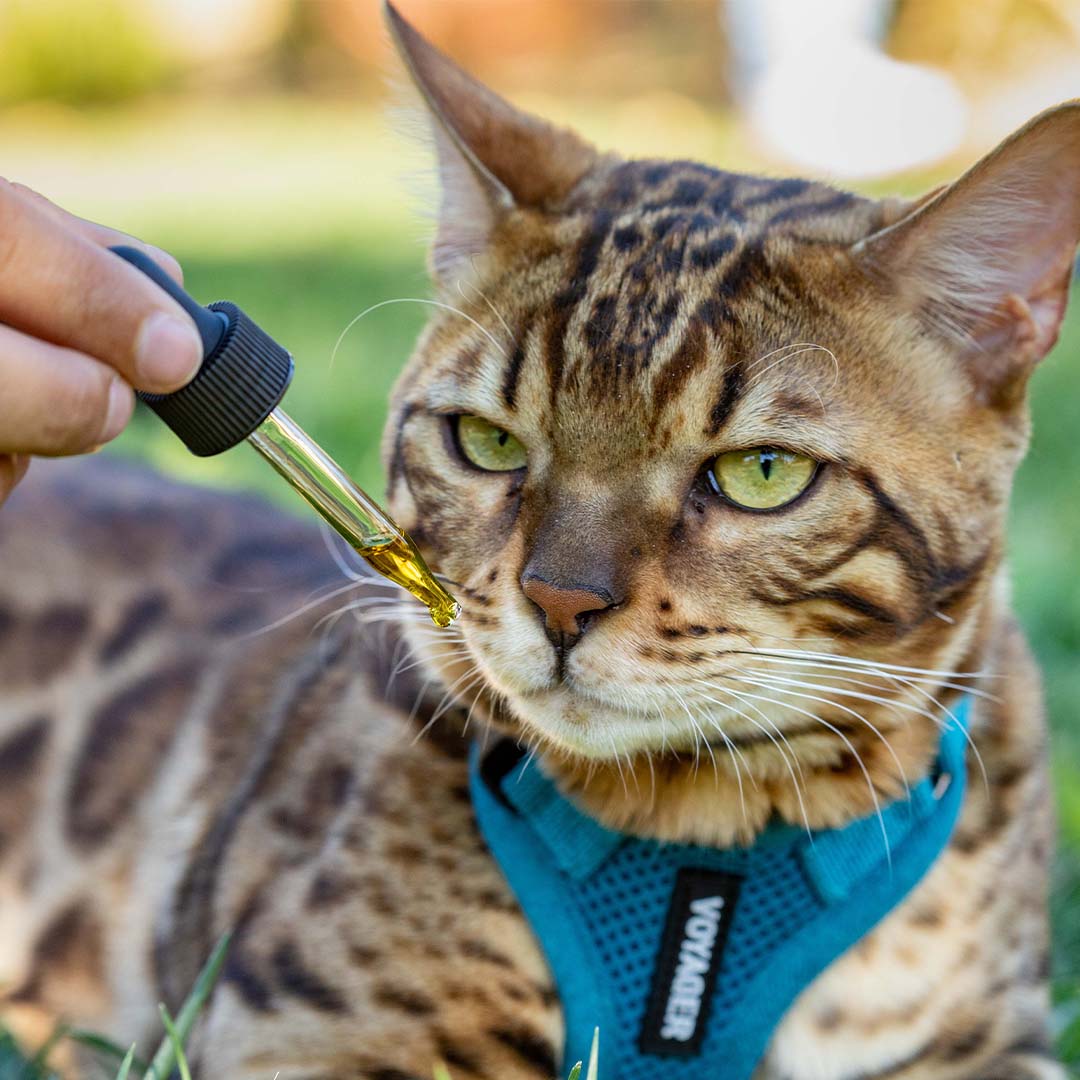Public service announcement: your dog might be very bored right now! Mental stimulation for dogs is often overlooked as we go about our busy lives. Some dog owners aren't aware that mental activity is just as important as physical exercise for their dog's wellbeing.
We can't blame pet parents at all though! Kids can tell you they're bored every ten minutes, but dogs can't use words to express their frustration. Instead, a dog's cry for help usually comes in the form of destructive behaviors, like chewing the furniture or barking like a broken alarm. There's no need to fret, though! This article will cover the ins and outs of canine mental stimulation, and what you can do to keep your dog engaged (and out of the hole in your sofa).
What is Mental Stimulation For Dogs?
You can think of canine mental stimulation as a workout for your dog's brain. Just like the body, a dog's brain needs regular exercise to maintain proper function. People exercise their minds with puzzles, books, games, and lectures. Dogs also have their own set of activities to work their brain, and that's what we refer to as "mental stimulation."
Is Mental Stimulation For Dogs Necessary?
Yes! Even though they're often goofy in nature, dogs are naturally intelligent mammals, and they enjoy using their minds more than you may realize. Just like people, they can become weary and bored from idleness. Your dog will seek ways to remedy this, and you might not like their solution — household chaos is typical behavior from bored pups!
While your dog won't die from lack of mental stimulation exercises, they won't come close to living their best life. Bored dogs are unhappy dogs and are most likely to cause trouble! By taking the time to stimulate your dog mentally, you'll keep your whole household happy and healthy.
What Happens When Dogs Don't Get Enough Mental Stimulation?
When dogs don't get enough mental stimulation, their most common response is to act out by being reckless and destructive. But did you know that lack of mental stimulation exercises can be harmful to your dog's overall health, too?
Dogs can experience physical and mental struggles due to a lack of mental stimulation. Some of these health problems include:
- Obesity
- Sadness
- Joint problems
- Depression
- Muscle atrophy
- Anxiety
When dogs have outlets for their mental energy, they're happier and healthier overall. Mental stimulation exercises provide them with the opportunity to think, problem-solve, and use their natural abilities. It also helps keep their minds sharp and alert!
How Much Mental Stimulation Do Dogs Need?
Most dogs should have at least 20 minutes of active mental stimulation each day. You can spend this time playing fetch together, going for a walk, or doing anything that keeps your dog's mind and body active! Providing enough dog mental exercise is one of the best things you can do for their overall health and well-being. Not to mention, the extra activity will be great for your health, too!
Are 20 minutes the right amount of time for all dogs, though? How can you tell if your furry friend needs more external stimulation?
Do Some Breeds Require More Mental Stimulation Than Others?
Yes — some breeds require more mental stimulation than others! But how can you tell? Dog breeds that have been bred to work (like herding or hunting dogs) often need more mental stimulation exercises than others. These breeds include:
- Jack Russell Terriers
- Border Collies
- Corgis
- Shepherds (like the German, Australian, and Belgian shepherds)
- Dalmatians
- Newfoundlands
- Irish Setters
- Weimaraners
- Boxers
- Huskies
- Pointers
- And many more!
Unsure if your favorite dog breed will require more mental stimulation? Before adopting, ask your vet or local shelter to determine if a specific breed is right for you! Some dogs don't need as much external mental and physical stimulation as others, so if you're looking for a more "low-maintenance" pet, it may be in your best interest to check out other breeds.
How To Tell If Your Dog Needs More Mental Stimulation
There are many noticeable signs you can look for that may signal your dog needs more mental stimulation. Here are some of the most common behaviors they may exhibit:
- Sleeping more often
- Frequent whining or barking
- Digging holes or destroying things
- Pacing or being unable to settle down
- Chasing their tail
- Having trouble paying attention
- Unable to focus on commands
If you notice any of these behaviors from your dog, it's a good indication that they may need more mental stimulation! Talk to your vet or local shelter about how you can provide your pup with the right type and amount of activity for their breed and personality if you're unable to find a solution that works for you.
Can You Overstimulate a Dog?
Yes, you can overstimulate your dog. While you should regularly mentally stimulate your dog, a dog's brain can become overwhelmed when too many things are happening in their environment. When this happens, your dog can't process everything happening at once. This can result in what's called hyper-arousal. Hyper-arousal can occur from too much negative or positive stimulation — it doesn't necessarily mean your dog is afraid or upset.
If you think your dog may be overstimulated, look for signs like excessive panting, pacing, drooling, barking, or even trying to hide. If you notice any of these signs, it may be best to remove your dog from the situation and give them some time to calm down in a quiet area. You can also try taking some deep breaths with your dog to help them relax.
Here are some other signs your dog may be feeling overstimulated:
- Becoming easily startled
- Staring or hyper-focusing
- Jumping on you, other animals or people, or on furniture
- Less impulse control
While providing your dog with enough mental stimulation is an important part of being a pet owner, it's important to find the right balance of activities to keep your dog happy and healthy.
Benefits of Mental Stimulation For Dogs
There is a lot to gain from working your dog's brain! Your dog will always be one paw ahead of the game if their mind is active. Mental stimulation helps your dog ward off stress, depression, and age-related mental decline. It brings you and your dog closer and lets them burn off steam. And not to mention, it saves your house from domestic terrorism.
Reduces Hyperactivity
Mental stimulation exercises allow your dog to exert pent-up energy, making hyperactivity a thing of the past. Walks, games, new tricks, and dog sports all require stamina. More complex games and routines require a lot of focus, and that gets your dog to channel their energy too.
Improves Mood
A mentally stimulated dog is a happy dog! Exercising the mind cheers your dog up by providing them with an exciting new activity. It turns on parts of their brain that may not get activated through their everyday routine. This increased brain activity staves off depression, stress, and keeps their tail wagging all day long.
Reduces Boredom & Destructive Behavior
Remember what we said about bored dogs destroying couches? Yeah, it's a thing. However, providing your dog with adequate mental stimulation offers them an alternative to going through the trash and scratching doors. Your dog can't destroy your home if they're busy playing hide and seek. Plus, they won't feel the urge to cause chaos in the first place if they're entertained.
Supports Aging Minds
Keeping your dog's mind active is especially important as they age. Just like people, dogs are prone to cognitive decline as their brains age. You can keep your older dog's mind healthy by keeping it engaged. The increased brain activity maintains the neuronal connections, which are prone to degrade with age.
Teaches Good Behavior
Mind exercise is also vital for young dogs. Games, play, and socialization set puppies up for success by increasing confidence and teaching proper behavior. Puppies overflow with energy, so these activities also serve as a good outlet for their stamina. Puppies who receive adequate mental stimulation exhibit less destructive behaviors and better mental health as adults.
Strengthens Your Bond
Stimulating activities bring you and your dog closer together. Though some games can be played solo, many tasks are a team effort. You and your dog will spend more time together when you include more of these activities in your routine. When you and your dog are like two peas in a pod, your dog is less likely to disobey you or cause trouble.
How to Mentally Stimulate A Dog
Walks, sports, tricks, toys, parks, games — the list of stimulating activities for your dog is long. To maximize your dog's mental engagement, it's a good idea to mix it up and give them a range of different exercises. Some of these activities require a lot of participation on your end, and some don't. So if you're busy and don't have the time to work on a sport every day, it's okay! There's an option to suit every owner (and dog).
Smart or Interactive Toys for Dogs
Dog toys are a fantastic way to keep your pup entertained. We're not talking about just any toy, though. Smart dog toys that make your dog do some extra work are what really get the gears turning.
Working for food evokes a primal hunting instinct in dogs. That said, your dog may love puzzle-based food-dispensing toys like the Pet Zone IQ Treat Ball or the Trixie Activity Flip Board. These toys make your dog solve a puzzle to get a few treats. Or, if you've got a compulsive chewer on your hands, a Kong Toy combines a bone, ball, and treat into one.
If you Google "smart toys for dogs," you'll get bombarded with options for canine entertainment. Just make sure to read reviews and consider your dog's habits when purchasing a toy.
Play & Interact With Your Dog
Playtime is one of the best ways to give your dog a brain workout! All dogs have a natural instinct to play — it's encoded in their DNA from the time they're born. Play develops key hunting and survival skills essential for the continuation of the species (well, maybe not so much anymore, but dogs still play nonetheless).
Fetch and tug-of-war are an excellent place to start, but your dog might get bored with them at some point. When you want to step it up, you can try teaching your dog hide and seek. Have them sit and stay, then find a place in the house to hide. Call their name and reward them with treats when they find you!
You can also switch it up and try a scavenger hunt. Start by hiding a treat with a very obvious smell somewhere in the house. Let your dog find it and reward them with praise when they do. Once they get the idea, you can gradually make the hunts harder by hiding less obvious treats and toys and adding more items to the search. Pro tip: your dog will love scavenger hunts even more if you involve multiple members of the house in the game.
CBD Oil
Several pet owners attest to using cannabidiol (dog-specific CBD) to calm their energetic or aggressive dogs. CBD is a non-intoxicating cannabinoid derived from the hemp plant. It doesn't get your dog loopy or high! It works by supporting the function of your dog's endocannabinoid system (ECS). The ECS enhances cell communication and helps the body maintain homeostasis.
What that means for your dog is better control of their mood and energy. Although CBD oil for dogs is not intended for mental stimulation for dogs, it can provide similar benefits. In addition, many canines can be easily distracted from participating in mentally stimulating activities. Incorporating CBD may help promote your canine's focus and in turn, they might be less distracted.
CBD may also calm dogs with nervous tendencies or reduce aggression and fearful behaviors. Since CBD promotes mental balance, some dog owners report that it's reduced their dog's destructive behaviors and hyperactivity as well. If you think CBD might be a viable option for your canine friend, HolistaPet offers several organic, healthy products for your dog to try. CBD treats for dogs, capsules, shampoos, and tinctures are all available at an affordable price, and they're likely the cleanest formulas on the market. No GMOs, gluten, preservatives, or artificial dyes are found in any of our products.
Agility & Obedience Training
Is your dog athletic? No? That's totally okay, they don't have to be. Teaching your dog new tricks keeps them mentally stimulated, whether they're learning to run through an obstacle course or balance a treat on their nose.
If your dog is the sporty kind, agility training is worth looking into. Not only does it provide a ton of physical exercise, it also teaches your dog a myriad of new commands. Your dog will learn to jump through hoops, dodge poles, balance on a seesaw, and hope hurdles. That's a lot of instruction to hold in your head while you're running! If you don't have the time or money to bring your do to an agility class, you can always set up your own DIY agility course at home and get busy.
Obedience training is another option for dogs that need some brain exercise. Once your dog has mastered basic commands, you can teach your dog more complex orders. For example, you can get your dog to help with chores! You can train your dog to put away their toys by teaching them "take it" and "drop it" commands.
Dog Park
Socialization might be one of the best ways to engage your dog's brain. Learning to behave around other dogs is important regardless, but regular social interaction enriches your dog's lifestyle. Plus, your dog will honestly enjoy the company of others if they are well-socialized.
Before you bring your dog to meet another dog, it's imperative to consider their social history? Have they been aggressive with other dogs in the past? Do they typically shy away from others? If the answer is no, step right in and let your dog make friends.
If you're unsure about how your dog plays with others, take caution when entering a park. Make sure your dog feels comfortable in the environment and that the other dogs around them are roughly the same size. You should take your pet off the leash, but keep a close eye on them. If your dog isn't cooperating, take them home. You can try again another day.
Allow Them To Sniff & Explore on Walks
One great way to easily provide your dog with enough mental stimulation is by allowing them to sniff and explore on walks! You can take different routes each time you go for a walk and let your dog investigate new spots and smells. As always, keep your dog from sniffing plants that aren't dog-friendly and be mindful of what they try and get into.
Hide & Seek With Treats
Similar to how you'd play at home, you can also play hide and seek at the dog park with treats or a favorite toy! This is a great way to get some physical exercise and a great option if you dog walk with friends or have a particularly social dog. We recommend trying this after you've already played at home to get the most out of your time at the park.
Take Them to New Places
Going for routine walks isn't the only way to get active with your furry friend! You can explore new places with your dog by going on car rides, visiting new neighborhoods, or hiking in new areas. Just make sure to always keep an eye on your pup if you're in an unfamiliar area, and be prepared to keep them safe!
As dog lovers ourselves, we have a handful of favorite places to take our pets:
- Dog beaches and meetups (Corgi Beach Day is a personal favorite)
- Camping
- Playgrounds or jungle gyms
More About Dogs & How To Care For Them
Final Thoughts - Mental Stimulation For Dogs
We hope you're ready to give your dog all the mental stimulation you can offer! Seriously, the benefits are too great to pass up, and too true to deny. Your dog won't be going through your trash or tearing up your sofa if they get their daily games in! You'll have some fun too, so get cracking!








![Probiotics For Dogs [Soft Chews]](http://www.holistapet.com/cdn/shop/files/Probiotic-Infographic-1_472d7a29-e30c-435a-9638-1365d8c3a9f9.jpg?v=1725384841&width=104)
















![Is CBD Safe For Dogs? [Comparing The Benefits & Side Effects]](http://www.holistapet.com/cdn/shop/articles/232.jpg?v=1716830792&width=500)













Leave a comment
This site is protected by hCaptcha and the hCaptcha Privacy Policy and Terms of Service apply.